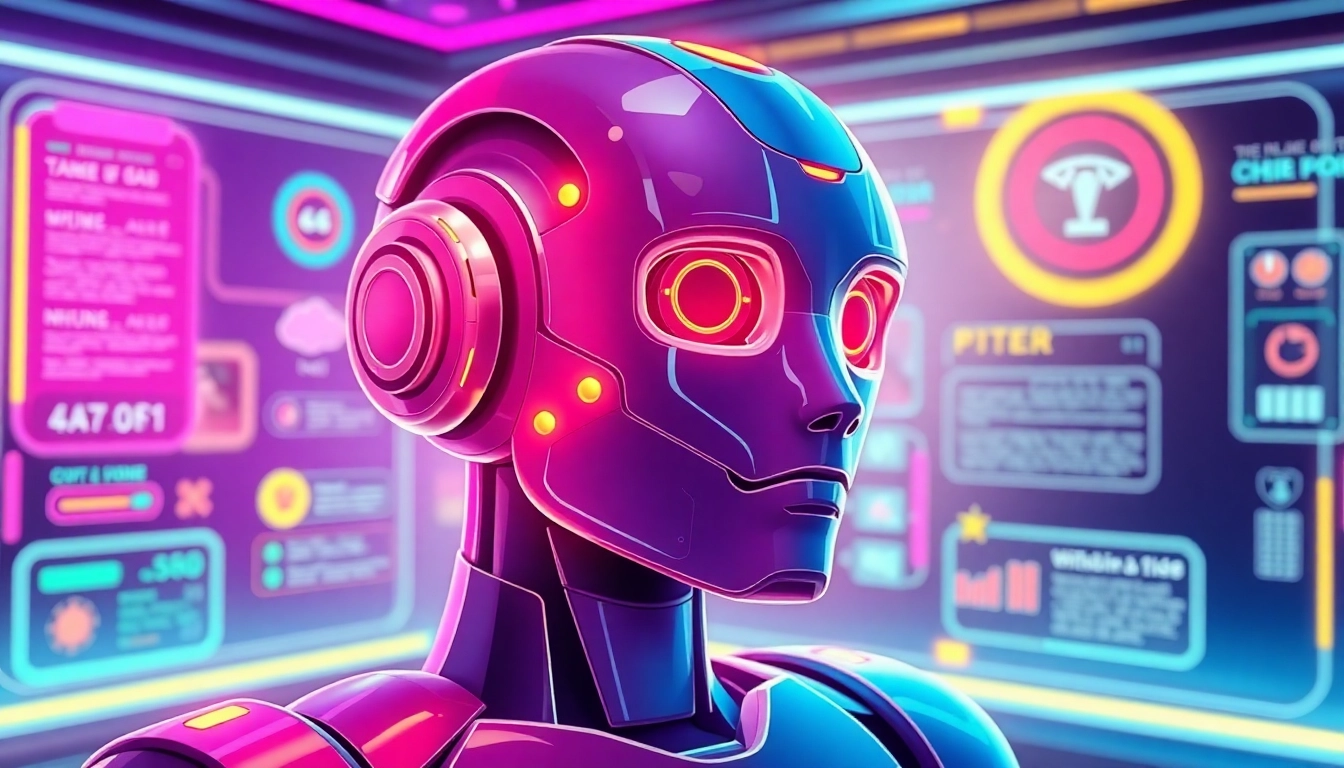Understanding the Human or Not AI Game
The rapid advancement of artificial intelligence has transformed the way we interact with digital entities daily. From customer support chatbots to virtual assistants, AI technologies are becoming increasingly sophisticated, blurring the lines between human and machine interactions. Amid this landscape, the human or not game emerges as a compelling social experiment and entertainment platform designed to test your ability to distinguish AI-generated responses from those of real human beings. This game serves as both an engaging challenge and a window into the evolving state of AI technology, making it a crucial activity for understanding our digital future.
What Is the Human or Not Concept?
The core idea behind the human or not game is simple yet profound: Participants engage in a brief, two-minute conversation with an anonymous conversational partner, who could be either a human or an AI. After the interaction, players must decide whether they believe they were speaking to a person or a sophisticated machine. This process encapsulates the essence of the Social Turing Test, a variation of the classical Turing Test, adapted for online, real-time interactions. The twist? The game emphasizes social cues—linguistic nuances, emotional expressions, and conversational patterns—that can reveal the nature of the interlocutor.
History and Evolution of Social Turing Games
The concept of testing machines’ ability to mimic human intelligence dates back to Alan Turing’s groundbreaking 1950 paper, “Computing Machinery and Intelligence.” The original Turing Test was a philosophical and experimental effort to determine whether a machine could exhibit indistinguishable intelligence from a human in conversation. Over subsequent decades, researchers developed various forms of “social Turing games,” integrating chatbots, virtual agents, and increasingly advanced AI models like GPT-4. Platforms like the modern human or not game have popularized these ideas, turning them into accessible, gamified experiences that challenge everyday users while helping developers refine AI behaviors. The evolution reflects a broader trend: the increasing realism of AI conversations, alongside a growing public awareness of AI’s capabilities and limitations.
Significance in the AI Era
In today’s era, where AI can generate human-like text, voice, and even images, the human or not game becomes a vital tool for social awareness and technological literacy. It allows users to gauge AI’s proficiency, recognize subtle cues that distinguish AI from humans, and reflect on the implications of AI in communication. Moreover, these games contribute valuable data that inform ongoing AI research, especially in natural language processing (NLP), emotion detection, and context understanding. They foster an experiential understanding of AI’s rapid development, encouraging critical thinking about the ethical, social, and psychological impacts of increasingly intelligent systems.
How to Play Human or Not Effectively
Step-by-Step Guide to Starting the Game
- Visit the Platform: Access the game via human or not website, which offers a seamless, responsive interface suitable for desktop and mobile devices.
- Initiate a Conversation: Click ‘Start Game’ to be matched with a conversation partner—either a human or an AI—without prior notice.
- Engage in a Two-Minute Chat: Use the provided chat window to converse naturally. There’s no need for specific prompts; the game is designed to gauge your instinct and observational skills.
- Make Your Guess: Once the two-minute timer expires, you’ll be prompted to decide whether your partner was a human or an AI.
- Review Results: The platform reveals whether you were correct, providing feedback to enhance your discernment skills.
Tips for Accurate Discrimination
- Pay Attention to Nuances: Observe responses for subtle cues such as grammatical consistency, emotional depth, and spontaneity.
- Ask Unpredictable Questions: Incorporate unexpected or complex questions that challenge scripted or patterned responses typical of AI.
- Assess Response Timing: Notice the natural flow; AI may sometimes produce slightly unnatural delays or overly perfect responses.
- Focus on Context: Track whether responses align logically and contextually, especially in multi-turn conversations.
- Stay Critical but Open-Minded: Avoid assumptions based solely on superficial cues; combine intuition with logical analysis for better results.
Common Challenges and How to Overcome Them
One major challenge in the human or not game is the increasing sophistication of AI, which can mimic human behaviors surprisingly well. To overcome these obstacles:
- Recognize Limitations of AI: Understand that despite AI’s impressive responses, it often lacks genuine emotional understanding or personal experiences. Trigger these areas with targeted questions.
- Use Behavioral Cues: Pay attention to inconsistencies or overly generic responses that might indicate AI use canned patterns.
- Practice Regularly: Enhance your skills through repeated play, which sharpens your ability to detect subtle differences.
- Leverage Community Insights: Join forums and social media groups sharing tips and experiences to improve your discrimination accuracy.
Why Engage with Human or Not?
Benefits of Testing AI Human Distinction Skills
Engaging with the human or not game offers numerous benefits beyond entertainment. It enhances your perceptual acuity, sharpens analytical thinking, and deepens your understanding of AI capabilities. By challenging yourself to detect subtle cues, you develop a keener intuition for AI behavior, which is increasingly vital in many professional fields such as cybersecurity, digital marketing, and psychology.
Enhancing Critical Thinking and Observation
Critical thinking is fundamental in differentiating between human and AI responses. The game compels players to analyze linguistic features, emotional expression, consistency, and contextual coherence. These observations hone cognitive skills, fostering a mindset that questions assumptions and seeks evidence in digital interactions. Building this skill set prepares individuals to navigate an AI-saturated environment more confidently and responsibly.
Contributing to AI Development Awareness
Playing and sharing experiences from the human or not game contributes to broader AI literacy. When users recognize AI’s limitations and strengths, they promote informed discussions about AI ethics, safety, and regulation. Furthermore, aggregated data from player guesses can inform developers on how AI responds in real-world conversations, guiding improvements and transparency efforts.
Key Features of Human or Not
Technological Foundations and AI Integration
The human or not game is built on cutting-edge AI technologies, including models similar to GPT-4, designed to simulate human conversation with high fidelity. The backend leverages robust tech stacks like Amplitude for analytics and Webflow for seamless UI/UX. This integration ensures real-time responsiveness, data security, and scalability. The AI models are continually refined through player interactions, enabling more natural and context-aware exchanges that challenge user perception.
Game Mechanics and User Experience
The platform prioritizes an intuitive experience with minimal friction. The game mechanics revolve around brief but meaningful conversations, immediate scoring, and learning feedback. Visual and auditory cues are optimized for various devices to maximize engagement. Features like real-time chat, instant feedback, and social sharing foster active participation. Additionally, the game promotes repeated play by offering streaks, leaderboards, and community challenges.
Community and Social Aspects
The human or not game encourages active community involvement through forums, social media integration, and multiplayer options. Participants exchange tips, share insights, and discuss their experiences, fostering a collective intelligence about AI behavior. The platform also hosts live events and competitions, boosting awareness and engagement with AI literacy initiatives.
Future Trends and Best Practices in AI Discrimination
Advances in AI Chatbot Detection
AI detection is a rapidly evolving field. Future innovations include the development of specialized detection algorithms that analyze linguistic nuances, response timing, and contextual inconsistencies at a granular level. Techniques such as behavioral biometrics, voice analysis, and pattern recognition will enhance accuracy, making detection more reliable and accessible for everyday users.
How to Stay Informed and Improve Your Skills
Staying ahead in AI discrimination requires continuous learning. Follow industry news on AI advancements, participate in forums like Reddit’s r/Humanornot, and subscribe to newsletters from leading AI research labs. Regular practice in platforms like human or not, combined with reading about AI limitations and latest breakthroughs, will sharpen your instinct and understanding.
Ethical Considerations in Human-AI Interaction
As AI becomes more human-like, ethical issues arise around deception, consent, and transparency. It’s vital for users to recognize when they are interacting with AI and to advocate for clear disclosures in critical contexts. Responsible AI use and awareness can prevent manipulation, misinformation, and erosion of trust, ensuring that these technologies augment human capabilities rather than undermine them.




